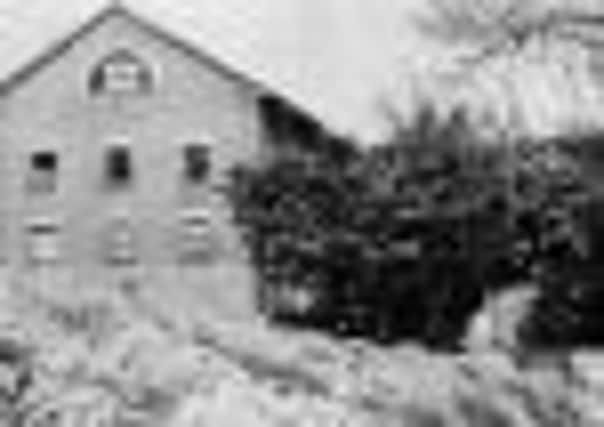When sun set on centuries of Sandy milling


SANDY Mill was listed as early as the Domesday Book, held by Eudo Dapifer. When the Manor of Sandy was sold as one lot by auction on May 20, 1851 at the Mart, London by direction of the heir it was described as: ‘A superior water mill with great water power, working four pairs of stones, com chamber, bran loft etc, and a neat and comfortable stone-built residence erected a few years since containing six bedrooms, two parlours, kitchen, wash house and cellar, enclosed flower garden and kitchen garden’ plus ‘a cottage with three bedrooms and a kitchen, granary, cow house for four cows, piggery, small farmyard, chaise house, stabling for eight wagon horses and three nag horses, wagon hovel, two meadows, island etc.’ It also had two water wheels.
In the 1851 census Elizabeth Pope aged 60 was living in the mill house with two sons Charles aged 36 and William aged 27. Although there is no record of this, the purchaser must have been Charles Pope as there is a stone CP 1857 on the site of the mill. Presumably in 1857 Charles Pope with his status as mill owner, rebuilt the mill. According to a survey of Bedfordshire brick making published by Bedfordshire County Council in 1979 “Sandy Watermill dated 1857 was built of mottled yellow and reddish bricks of varying hues” which were probably made at the brickworks north of Cox Hill.
Advertisement
Hide AdAdvertisement
Hide AdCharles Pope was still the miller in 1881, but by 1885 it passed to his cousin Frederick Newberry. In 1910 Ezra Garner and his brother William purchased Sandy Mill. Then in about 1924 Markham Herbert Walker became the owner. He sold it to Sidney Banks in 1938.
Sidney Banks discontinued local flour production, and with Albert Horner as foreman, delivered animal and poultry feed made from barley and wheat oats to a wide area. There were four floors. Four millstones on the first floor ground the grain, which was mixed and stored in hessian sacks on the ground floor ready for loading out. Grain was hoisted up to the top floor and emptied into 15 storage bins of different sizes on the floor below. The filled sacks were very heavy. Barley weighed 16 stone (2 cwt), wheat 18 stone (2 ¼ cwt), and beans 19 stone (2 ⅜ cwt).
Besides being a provender mill, three grain cleaning dressers were installed for seed production.
The water wheel was removed in 1947 after widespread floods and an electric motor installed while an electric grinder replaced the four millstones.
Advertisement
Hide AdAdvertisement
Hide AdGordon Barnett, who had become a mill employee in 1944 after leaving school, was appointed foreman in 1955 (in effect, the miller. He worked for Sidney Banks for 51 years).
In 1972/3 the sluice gates were removed when the Great Ouse River Authority carried out works on the River Ivel.
The mill closed in 1974, and was demolished in 1977. A block of flats now stands on the site. The original stone-built miller’s house, Park House, once the residence of the Pope family, is now a nursing home.